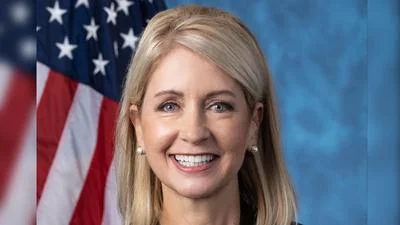New climate change model finds nuanced relationship between temperature, conflict | https://news.illinois.edu/
New climate change model finds nuanced relationship between temperature, conflict | https://news.illinois.edu/
New climate change model finds nuanced relationship between temperature, conflict
A new framework for studying the intersection of climate anomalies and social conflicts finds a strong link between temperature fluctuations and aggregated global conflicts, in a paper co-written by a University of Illinois Urbana-Champaign analytics expert.
Climate anomalies such as rainfall and temperature deviations are often associated with social conflict via civilian protests, but the majority of climate-related conflicts are triggered by rebel actors against government resources, according to a study co-written by Ujjal Kumar Mukherjee, a professor of business administration at the Gies College of Business at Illinois.
“Many past studies of climate change and societal conflicts have failed to fully account for the interdependencies that underpin these respective processes,” he said. “Climate change and social conflict each have spatial and temporal dependencies at the regional as well as global levels. That’s why we developed a new framework to specifically address those challenges and help social scientists explore similar domains.”
Mukherjee’s co-authors are Benjamin E. Bagozzi, a professor of political science at the University of Delaware, and Snigdhansu Chatterjee, a professor of statistics at the University of Minnesota.
The results show a nuanced relationship between temperature deviations and social conflicts that has not been found in previous research, Mukherjee said.
“There has been a lot of discussion at the international policy level about climate change and its impact on various aspects of life such as health, social life and economic activity,” he said. “It’s well known that competition for access to resources such as arable land and minerals can, over time, create conflict. But our study is predicated upon understanding the relation between temperature anomalies and social conflicts of different kinds among different groups like government forces, armed non-state individuals and groups, and unarmed civilians.”
Using an intricate modeling framework to analyze global data during times of peace as well as conflict, the researchers evaluated the relationship between temperature anomalies and different types of social conflicts, including “material conflicts” involving physical confrontations such as protests or roadside bombings, and “verbal conflicts” involving threats, ultimatums or similar forms of nonphysical confrontation.
The researchers found significant evidence to suggest that periods of unusually high temperatures were associated with social conflict primarily through government-rebel material conflicts such as rebel attacks against government resources or acts of state repression, and government-civilian conflict via civilian protests.
“We find that the majority of the conflicts associated with climate anomalies are triggered by rebel actors, and others who react to such acts of conflict,” Mukherjee said. “The big contribution of this paper is the objective quantification of the impact of rising temperatures and climate change on human conflict. There’s been a lot of anecdotal evidence, but there hasn’t been a structured, large-scale study with global data.”
The implications of the research underscore how vital international cooperation is for combating climate change, Mukherjee said.
“Functionally, policymakers ought to be interested in the paper because it shows how interdependent regions are with regard to climate conflict,” he said. “International cooperation on climate change-mitigation efforts have been premised on the notion that harmful social and economic activities in one region can spill over into other regions through greenhouse gas emissions, global warming and the aftereffects of extreme climate events. We saw this recently with the farmer protests in India. The farmers felt that they weren’t getting enough in government subsidies, so they were demanding more.
“Such conflicts aren’t uncommon, but they are likely to reverberate regionally, because everyone depends on agriculture and mineral resources.”
The framework also can help social scientists explore similar domains involving large-scale spatial and temporal dependencies, Mukherjee said.
“Researchers, particularly political science researchers, should be interested in our framework from a methodological standpoint, because they can take the model and analyze similar data that can help in policymaking,” he said. “In the field of big data, there’s always the issue of reverse causality. Our new model accounts for that.”
The paper was published by the journal Environmetrics.
The study was supported by a grant from the National Science Foundation’s Division of Mathematical Sciences with funds from the program Algorithms for Threat Detection.
Original source can be found here






 Alerts Sign-up
Alerts Sign-up